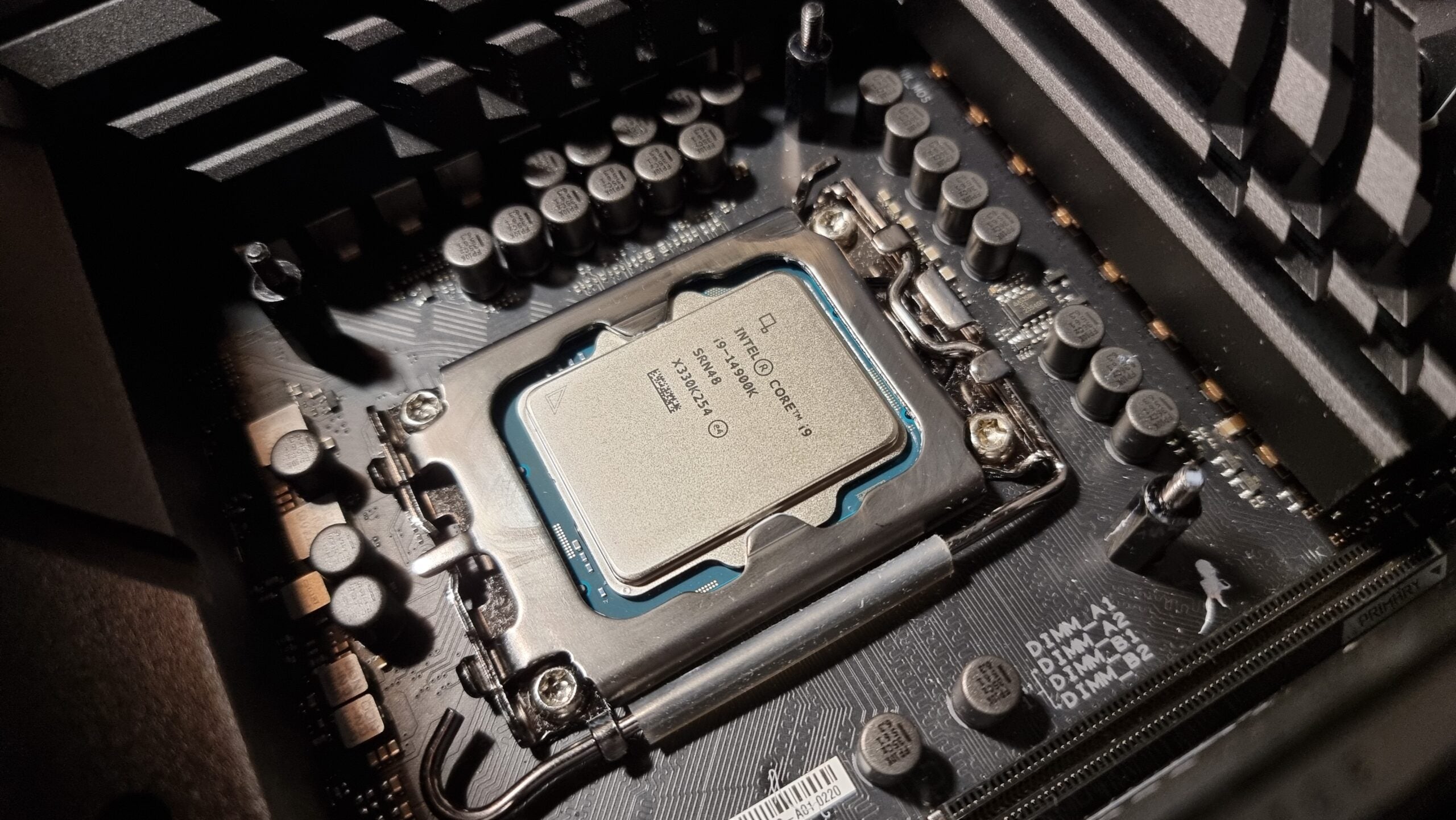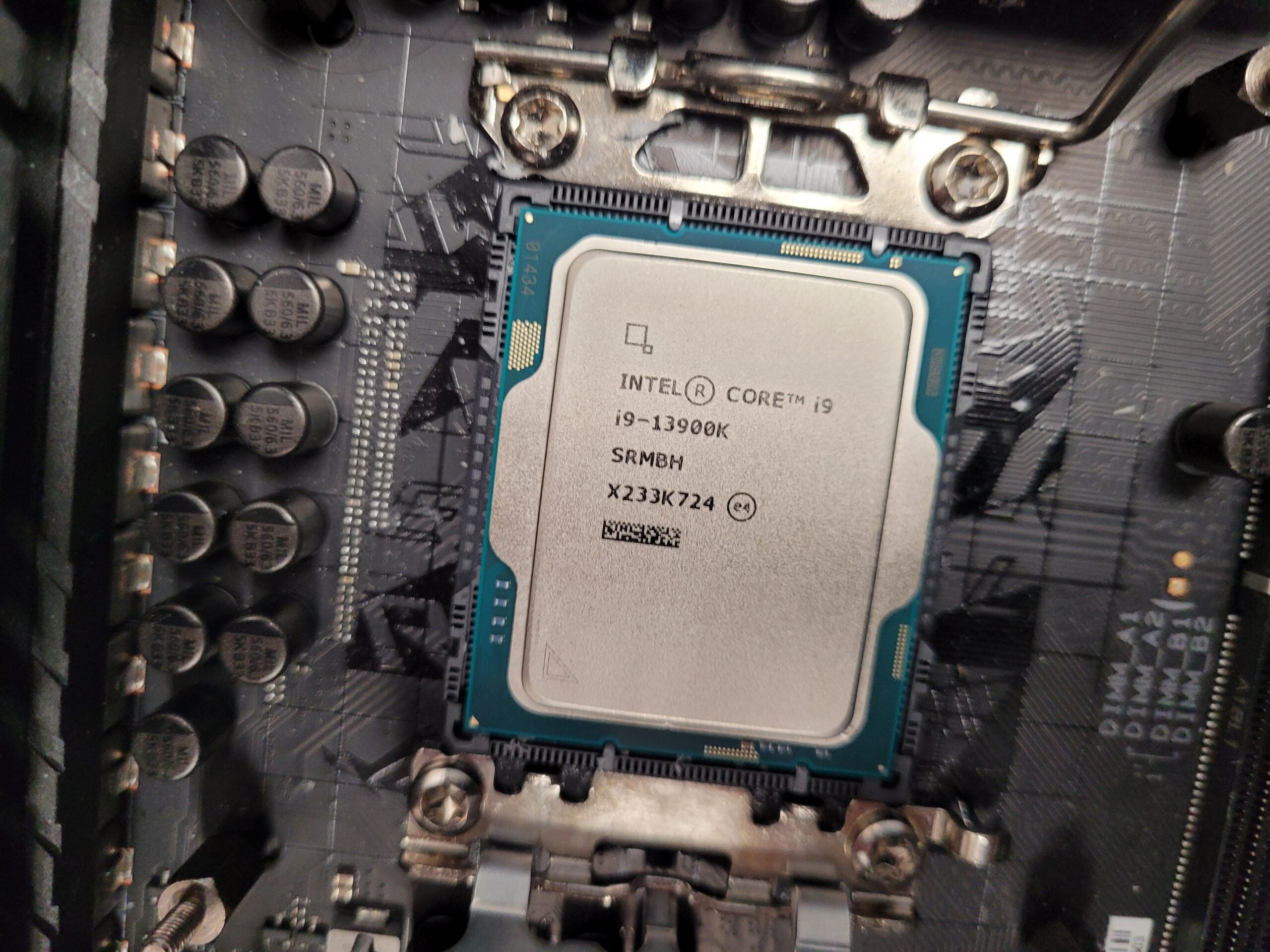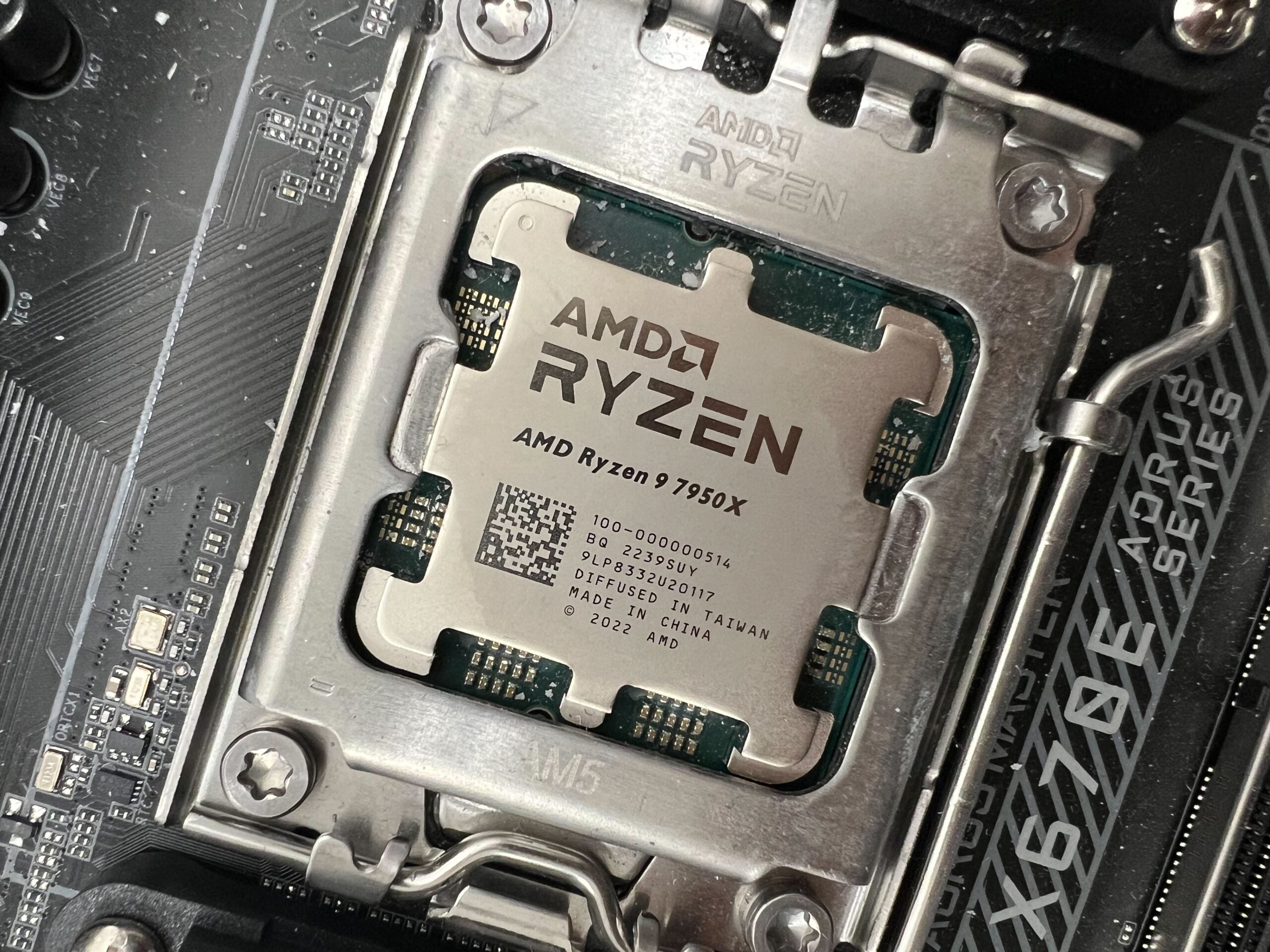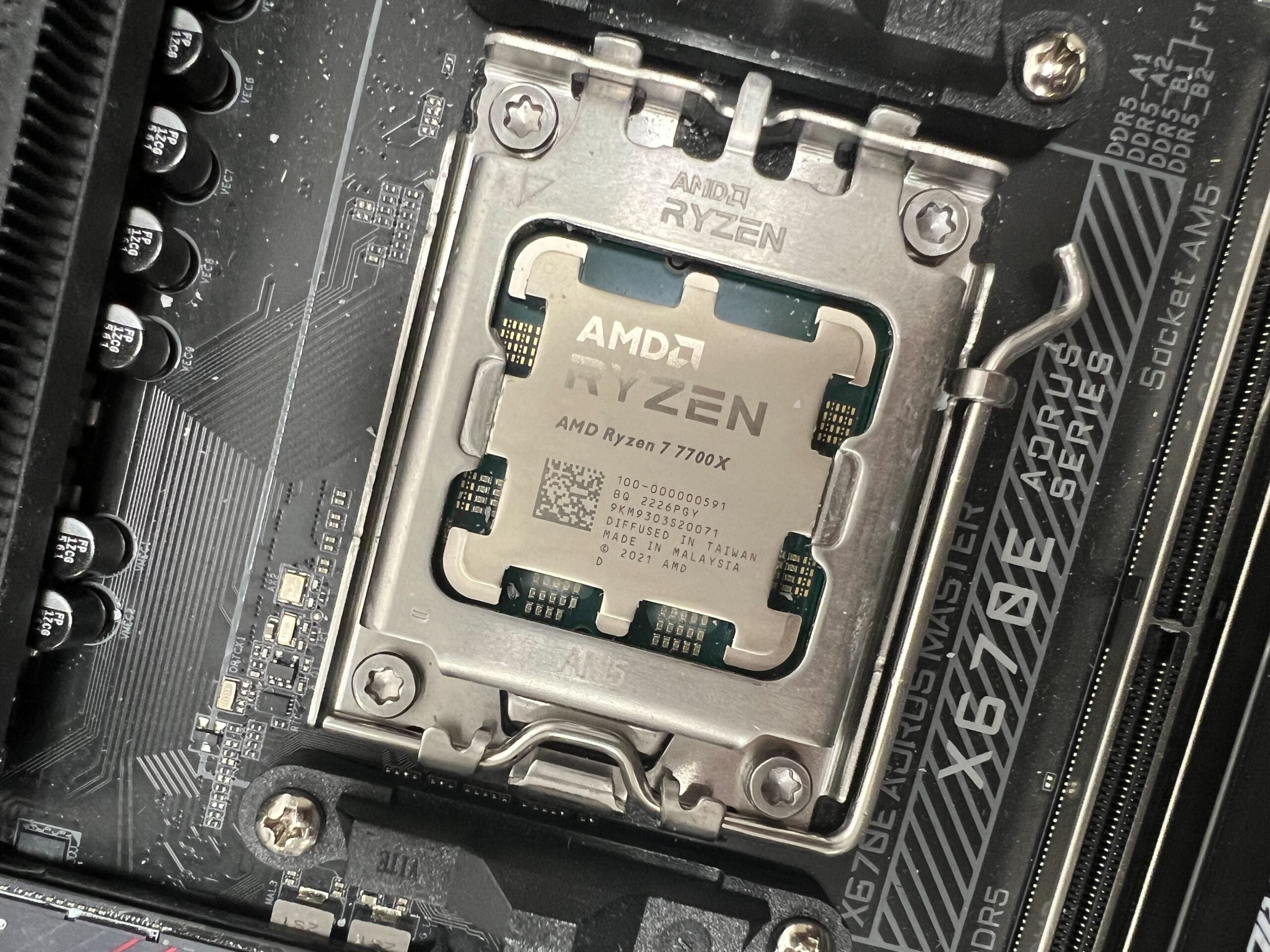Intel Core i5-12600K Review
The best value gaming processor
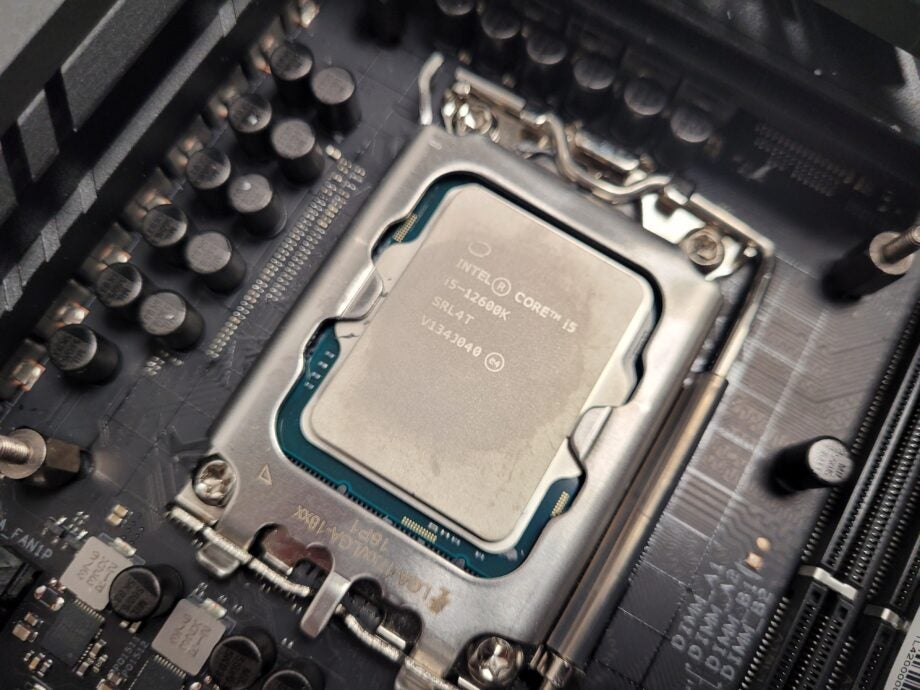

Verdict
The Intel Core i5-12600K is the best value gaming CPU available, offering a similar level of performance to the i9 while also boasting future-proofed features such as DDR5 and PCIe 5.0. It also packs a respectable multi-core performance, making it a versatile chip for those who want to both create and play.
Pros
- Excellent gaming performance
- Huge improvements to multi-core performance
- Future-proofed with PCIe 5.0 and DDR5
- Great power efficiency
Cons
- Teething issues for game compatibility
- Requirement of Z690 motherboard drives up cost
Availability
- USARRP: $289
Key Features
- 12th Gen Intel Core architectureThe new Alder Lake architecture boosts performance, while using two different types of cores to improve efficiency.
- 10 cores and 16 threadsBy featuring 10 cores, the i5-12600K flaunts a better multi-core performance compared to previous Intel Core i5 chips.
- Support for DDR5 and PCIe 5.0By supporting the latest technology, this chip raises the performance ceiling of your entire system.
Introduction
The Intel Core i5-12600K is one of the cheapest CPUs in the new 12th Generation Intel Core range. It lags behind its more powerful siblings in terms of core and thread counts, but still benefits from all the generational upgrades that Alder Lake brings.
This includes the ‘hybrid architecture’ that enables the chip to work more efficiently, and support for new features such as PCIe 5.0 and DDR5 RAM.
And of course, you’re also getting a reported 19% performance lift compared to 11th Gen for single-core workloads, making this an ideal processor option for gaming.
But is it a worthwhile alternative to its more powerful sibling, the Intel Core i9-12900K? The i5 may not be the “world’s best gaming processor”, but it could well be the best gaming CPU when it comes to value for money.
Specs
- New Alder Lake architecture provides big performance gains
- Mix of P-cores and E-cores improves processor’s efficiency
- Future-proofed with new technology such as DDR5 and PCIe 5.0
The Intel Core i5-12600K processor is part of the new 12th Generation of Intel Core chips, with the Alder Lake architecture baked inside.
This means it benefits from many of the same upgrades as the i9-12900K, most notably the hybrid architecture that allows Intel to incorporate two different types of cores into the chip: Performance Cores (P-Core) and Efficient Cores (E-Cores).
P-Cores focus specifically on single-core workloads, such as gaming. Meanwhile, E-Cores are better equipped at handling less-intensive background tasks, therefore boosting the multi-threaded performance.
The i5-12600K features a balance of 6 P-Cores and 4 E-cores – that’s just two fewer P-Cores than its i9 sibling, but half the number of E-Cores. This immediately shows this chip prioritises workloads such as gaming over content creation, which is no surprise.
But why is a hybrid architecture more impressive than a standard one? It essentially improves the efficiency of the CPU, with the Intel Thread Director capable of assigning workloads to the most relevant core. This could prevent trivial background tasks (such as running video recording software) from increasing the workload of a core that’s already under stress from maintaining a high FPS performance for a game.
This new ‘hybrid architecture’ is very impressive, but that’s not the only benefit of Alder Lake. It also sees a 19% single-core performance uplift compared to 11th Gen, which will be a big boost for gamers.
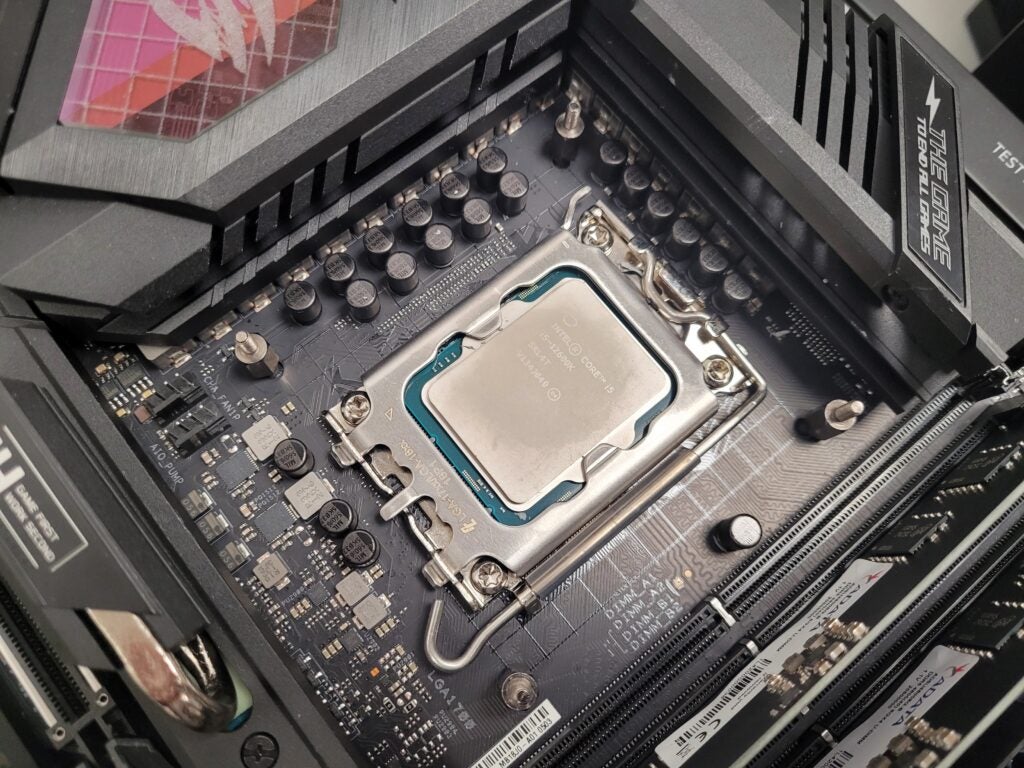
There’s support for DDR5 RAM, raising the performance ceiling significantly for memory. Intel Alder Lake also plays nice with PCIe 5.0, doubling the bandwidth for supported SSDs, which can slash in-game loading times.
Having support for these next-gen features ensures this Intel chip is future-proofed for years to come, while also offering backwards compatibility so you don’t need to make all the upgrades right away if the cost is getting steep.
Unfortunately, you’re going to have to buy a new motherboard with a Z690 chipset in order to get the Intel Core i5-12600K up and running. This adds to the cost even further, so you’re going to have to factor in plenty more than just the price of the Intel chip when upgrading. You can find out which motherboards work with Alder Lake in the attached guide.
Test setup
- Maintained consistent specs across PC builds where possible
- Used DDR5 memory with Intel 12th Gen rig
- Used both synthetic tests and in-game benchmarks
To evaluate the performance of the Intel Core i5-12600K, I tested several other processors using the same components where possible. Of course, motherboards had to be changed when swapping between processors from different companies and generations.
I also had to benchmark the Intel Core i5-12600K with DDR5 memory, as the Z690 motherboard I called in does not support DDR4. This means the performance differences between 11th and 12th gen may be partly due to the DDR5 memory upgrade, although I did ensure it features the same 16GB memory capacity as the DDR4 memory I used with the non-Alder Lake chips.
You can see the PC builds I used for testing below:
- Intel Motherboard: ROG Maximus XIII Hero (11th Gen) / ROG Strix Z690-E Gaming WiFi (12th Gen)
- AMD Motherboard: TUF Gaming X570-Plus Wi-Fi
- RAM: Corsair Vengeance, 16GB DDR4 / Adata, 16GB DDR5 (Intel 12th Gen)
- GPU: Nvidia GeForce RTX 3060 Ti
- Cooler: Corsair Hydro Series H150i PRO RGB 360mm liquid cooler
- OS: Windows 11
I used a variety of benchmark tests to evaluate the performance of the processor, including PCMark 10 and Geekbench 5 for general use and Cinebench R23 for creative applications.
And since Intel is clearly pitching the i5-12600K as a gaming processor, I’ve also tested the processor with a number of in-game benchmarks, making sure to max out the graphics settings and using 1080p, 1440p and 4K resolutions. Keep scrolling down for the findings below.
Performance
- Similar gaming performance to Intel Core i9-12900K
- Competitive multi-core performance
- Select games have seen early compatibility issues
Intel is heralding the i9-12900K, as the “world’s best gaming processor” but I actually believe the i5-12600K is the better value option for the majority of gamers after comparing the benchmark results.
The i5 processor often saw identical frame rate results to its more powerful i9 sibling, with the biggest margin found in the Dirt Rally 1080p test, but with only a 10fps difference – and it still managed to hit a very impressive 220fps here when paired with Nvidia’s RTX 3060 Ti.
However, Intel has revealed a number of games that may suffer incompatibility problems with Alder Lake at launch. Intel claims this issue should be remedied with an upcoming patch, but it’s still an issue that’s worth keeping your eye on.
As expected, it’s the multi-core performance where the i9 really shines more than the i5, seeing significantly superior results for the Geekbench 5 and Cinebench R23 multi-threaded tests. This means that the i9 is arguably the better option for content creation, but the i5-12600K is hardly a slouch in this department, seeing better scores than both the Intel Core i9-11900K and AMD Ryzen 7 5800X.
Scroll down for a more detailed look at the benchmark results.
PCMark 10 Extended
The PCMark 10 benchmark provides a holistic view of your computer’s performance, measuring everything from productivity to gaming.
The Intel Core i5-12600K scored a 9470 result, lagging behind the more expensive i9-12900K and i9-11900K processors. However, it managed to beat the Ryzen 7 5800X despite being more affordable. The PCMark 10 result may not cause any shockwaves, but it certainly backs up my thoughts that this is one of the best value chips around.
Geekbench 5
Geekbench 5 is a benchmark test that evaluates day-to-day performance, but splits the results up between single-core and multi-core. The former is important for workloads such as gaming where Intel has previously excelled, while the latter is a good measure of performance for the likes of content creation apps.
So how did the Intel Core i5-12600K perform? The single-core performance is spectacular, with a 1742 score not too far behind the i9-12900K, while narrowly beating out the Intel Core i9-11900K. This is an early signal of its gaming prowess.
For the multi-core performance, it fell quite a distance behind the i9-12900K which is unsurprising since its more powerful sibling has six additional cores and eight extra threads. Still, the i5 chip managed to achieve a higher score than both the i9-11900K and Ryzen 7 5800X, which is remarkable.
Cinebench R23
The Cinebench R23 is a similar benchmark test to Geekbench in that it measures both the single-core and multi-core performance of a processor, but it also gives your system more intensive workloads to see how it would cope with the likes of content creation.
The i9-12900K won this test by a significant margin, proving it’s a far better option for creators. But the i5-12600K still did reasonably well, with better results than any of the other chips on test.
If you want a processor for both gaming and content creation, then I’d happily recommend the i5-12600K – you just won’t be getting the best performance available for the latter workload.
Horizon Zero Dawn
Now onto gaming. I picked Horizon Zero Dawn because it’s a modern AAA game with a massive world to explore. It also has an in-game benchmark.
I was impressed with the i5-12600K results here, seeing almost identical benchmark scores as the i9. You’re admittedly not getting huge gains on the preceding generation, but there are still undeniable improvements to the frame rate, especially at a 1080p resolution.
Diary Rally
With Dirt Rally launching back in 2015, it’s not very taxing on your system, allowing you to reach higher frame rates more easily. This test demonstrated how big of a difference the i5-12600K can make on your gaming performance, seeing a 33fps boost at a 1080p resolution when compared to the i5-11900K from the previous generation.
Again, the i5 saw identical results to the i9 in the 4K and Quad HD benchmark tests, but fell short by 10fps when testing at a 1080p resolution. That’s not a massive difference, but still emphasises that the i9 is the most powerful CPU around for gaming.
Borderlands 3
Borderlands 3 is another modern AAA game that can be very taxing on your system. It saw unusual results compared to my other benchmarks, being the only game to see the older i9-11900K processor reign supreme across all resolutions.
My only guess here is that Borderlands 3 currently lacks the driver support to play nice with Alder Lake. Intel warned me about some early compatibility issues with select games, which is currently being resolved via game patches and Windows updates.
It’s understandable that there are some early teething issues, with Intel’s hybrid architecture and support for DDR5 memory being so cutting edge. And I’m sure such issues will be resolved soon, but it’s still something to be wary about if you plan on upgrading to Alder Lake as soon as possible.
Total War: Warhammer 2
| Warhammer 2: Campaign (in FPS) | Warhammer 2: Battle (in FPS) | |
| Intel i9-12900K | 62.7 | 49.2 |
| Intel i5-12600K | 62.7 | 49.2 |
| Intel i9-11900K | 61.6 | 48.4 |
| Intel i5-11600K | 61.8 | 48.2 |
| Ryzen 7 5800X | 61.8 | 46.7 |
I made sure to include Total War: Warhammer 2 as a representative of the strategy genre. It’s a fairly old game, but can still be taxing on your system, especially during the battle scenes.
The Intel i5-12600K performed admirably here, seeing identical results to the i9 at a 4K resolution. However, it didn’t see huge improvements over 11th Gen, but that’s seemingly the norm at such a high resolution – if you really want a boost when playing games in 4K, only a GPU can provide the required firepower.
Civilization VI
| Civilization VI (Turn Time in seconds) | |
| Intel i9-12900K | 6.85 |
| Intel i5-12600K | 6.90 |
| Intel i9-11900K | 6.92 |
| Intel i5-11600K | 7.07 |
| Ryzen 7 5800X | 6.83 |
Civilization VI differs from the other games on test here, measuring the time it takes for the CPU to make calculations between game turns instead of the frame rate.
The i5-12600K performed well here, seeing better results than both of the 11th Gen chips on test. However, the difference is marginal, so you likely won’t notice a difference in real-time play. Still, it further emphasises that the i5-12600K is a better gaming chip than the i9-11900K.
Power consumption and heat
- Impressive power efficiency
- Has a low peak temperature under stress
It’s not all about the performance when evaluating a processor – the power consumption and temperature are also important considerations. For power consumption, I measured the wattage of my system with a power meter, recording the peak figure during the Cinebench R23 benchmark.
| Idle power draw | Peak power draw | |
| Intel i9-12900K | 69.1 W | 335.5 W |
| Intel i5-12600K | 65.5 W | 195.6 W |
| Intel i9-11900K | 67.7 W | 330 W |
| Intel i5-11600K | 65.5 W | 201.4 W |
| Ryzen 7 5800X | 66.9 W | 193.4 W |
Remarkably, the i5-12600K saw one of the lowest peak power consumptions of all the processors on test. It even undercut the i5-11600K processor, despite flaunting far more power. This demonstrates how power efficient Alder Lake truly is, which is very welcome if you’re conscious about energy bills or being more eco friendly.
Its idle power consumption wasn’t quite as impressive, seeing a very similar result to the rest of the chips. But it was still a little less power hungry than the i9-12900K.
| Idle CPU temperature | Peak CPU temperature | |
| Intel i9-12900K | 28°C | 97°C |
| Intel i5-12600K | 24°C | 68°C |
| Intel i9-11900K | 29°C | 75°C |
| Intel i5-11600K | 30°C | 64°C |
| Ryzen 7 5800X | 45°C | 86°C |
I was equally impressed with the temperature scores, which I recorded via PCMark 10. The i5-12600K ran a whopping 29°C cooler than the i9-12900K during the test, while also recording the lowest temperature (24°C) when idle.
This means you probably won’t need to invest in an expensive cooler to maximise the performance power of this chip, which is a relief since the need for a new Z690 motherboard is already a costly outlay.
Latest deals
Should you buy it?
If you want a future-proofed gaming CPU: The gaming performance is here is near-enough the best you can expect from a processor. Factor in future-proofed features such as DDR5 and PCIe 5.0 and this chip represents outstanding value.
You don’t want to spend big on a CPU upgrade:
The Intel Core i5-1600K isn’t an expensive CPU, but the need for a new motherboard and possibly even DDR5 RAM can drive up the cost. It may be worth investing in a new GPU instead if you just want to improve gaming performance.
Final Thoughts
The Intel Core i5-12600K offers outstanding value, with a similar gaming performance to the i9 and a multi-core performance that can outpace pricier Ryzen chips. What’s more, support for DDR5 and PCIe raises the performance ceiling for your entire system and keeps it futureproofed for years to come.
Those craving a chip for high-end content creation may be swayed by the i9, while the need to upgrade to a Z690 motherboard may make a new GPU a more cost-effective upgrade for gamers. Yet the Intel Core i5-12600K remains one of our top recommend desktops processors you can currently buy.
How we test
We always review multiple CPUs at once to compare data, using consistent components for fair testing where possible.
We use a mix of both synthetic and in-game benchmarks to gauge performance, while also considering additional features and pricing.
Use the same components where possible for fair testing.
Use both synthetic and in-game benchmarks for testing
Test both CPU temperature and power consumption.
FAQs
Yes, this processor posted some of the best gaming results I’ve seen yet, making it a superb option for such workloads.
Alder Lake processors use the LGA 1700 socket and is supported by the Z690 chipset.
The naming convention “i5” only refers to the fact this is a mid-range CPU, and has no correlation with the time of release. You’ll need to pay attention to the generation number to determine how old a processor is instead. The Intel Core i5-12600K is part of the 12th Generation, which is the latest Intel has released.

